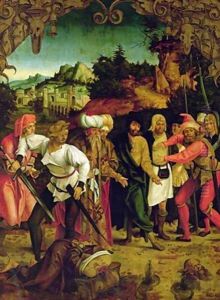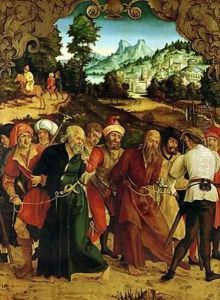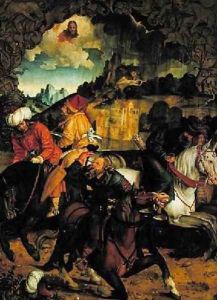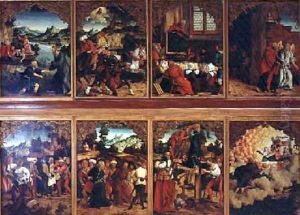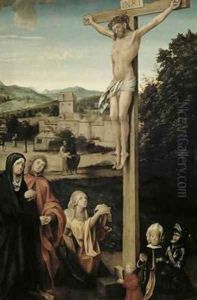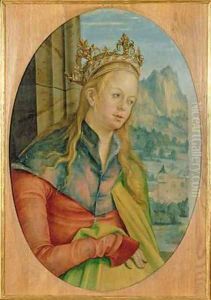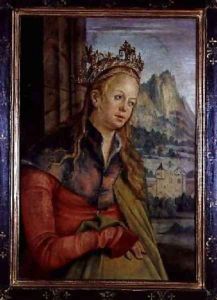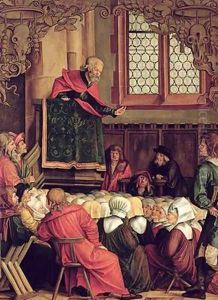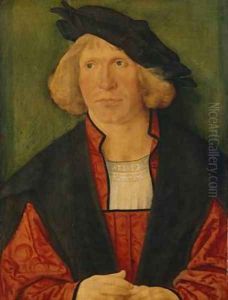Hans Suess Kulmbach Paintings
Hans Suess von Kulmbach was a German artist known for his significant contribution to the Northern Renaissance, particularly in the realm of painting and woodcut design. Born around 1480 in the city of Kulmbach, then part of the Holy Roman Empire, he is often associated with the Franconian school of art and was closely connected with Albrecht Dürer, one of the most prominent figures of the Northern Renaissance. Despite the frequent association with Dürer, Kulmbach developed a distinctive style that combined intricate detail with vibrant colors, setting his work apart from his contemporaries.
Kulmbach likely received his initial training in Nuremberg, a hub for artists and craftsmen during the Renaissance. His early works suggest a strong influence from Dürer, but over time, Kulmbach's unique approach to composition and color became more apparent. He is particularly noted for his religious paintings, altarpieces, and woodcut designs. Among his most famous works are the St. Lawrence and St. Stephen series of altarpieces for the city of Nuremberg.
Despite his achievements, detailed records of Kulmbach's life are scarce, and much of what is known about him comes from the analysis of his works and a few references in Dürer's writings. Kulmbach's artistic career also included a successful foray into printmaking, where he utilized woodcuts to express religious themes with a depth and intensity that were groundbreaking for his time.
Kulmbach's contributions to art were not limited to his paintings and prints. He was also involved in the design of stained glass windows and possibly other decorative arts, showcasing his versatility as an artist. His works are characterized by their emotional depth, detailed landscapes, and the use of light and shadow, which would influence the development of German art in the Renaissance.
Hans Suess von Kulmbach died in 1522, leaving behind a legacy that would be appreciated by art historians and enthusiasts for centuries to come. His ability to blend technical skill with expressive content in his works has cemented his place as a significant figure in the history of Renaissance art. Despite the lack of extensive personal records, his art provides a valuable insight into the religious and cultural milieu of his time.
